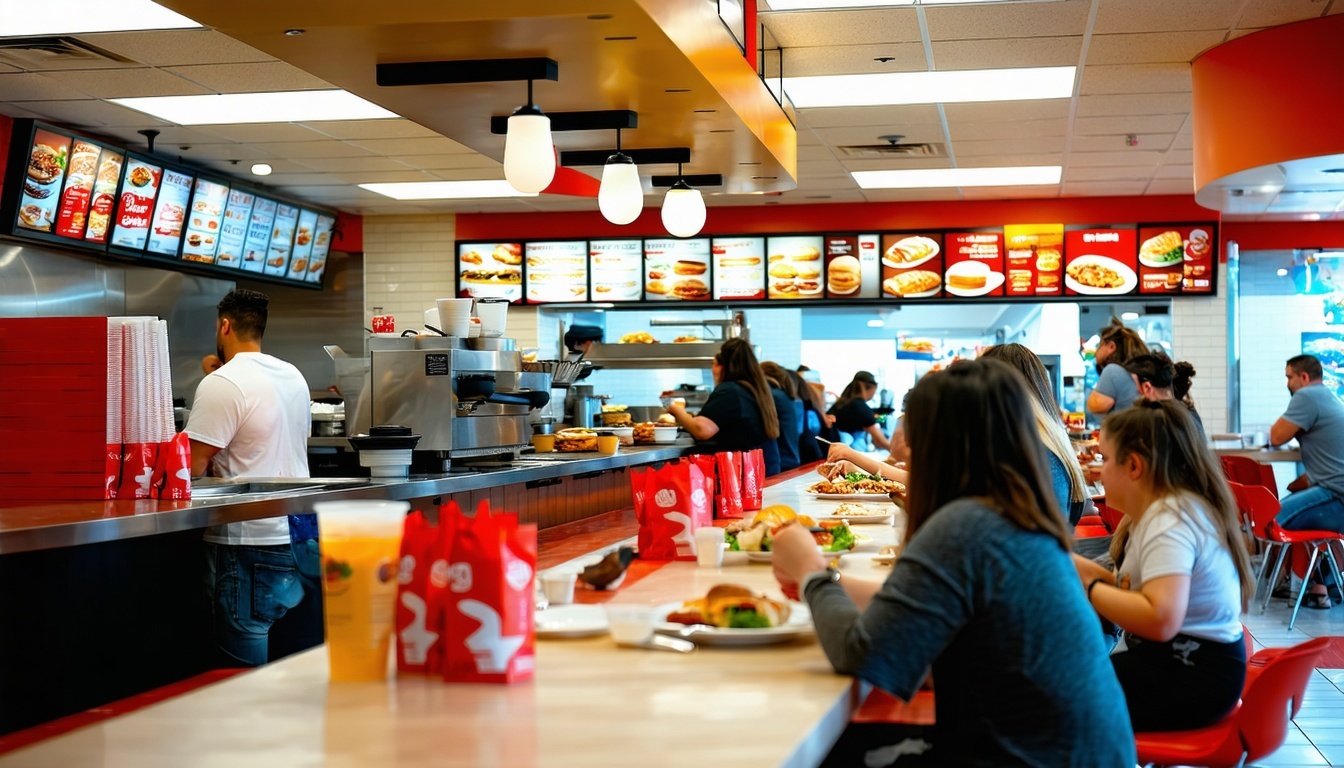How Quick-Service Restaurants (QSR) Leverage Loans for Expansion
In the fast-paced world of fast food and casual dining, timing is everything—and when opportunity knocks, quick-service restaurants (QSRs) need the capital to scale fast. Whether it’s opening a second location, upgrading kitchen equipment, or launching a delivery app integration, smart financial planning is critical. That’s why QSR owners increasingly turn to business loans for expansion.
In this guide, we explore how QSRs use different financing strategies to grow efficiently and stay competitive in a saturated market.
Why Expansion is a Smart Move for QSRs
Quick-service restaurants have a unique advantage: scalability. With streamlined menus, repeatable processes, and strong branding, it’s possible to replicate success across new locations or channels. Expansion can help you:
-
Capture new market segments
-
Increase revenue with higher volume
-
Improve economies of scale (e.g., bulk food purchasing)
-
Enhance your brand’s regional visibility
-
Add value to your business for future franchising or resale
But rapid growth comes with a hefty price tag—and that’s where financing comes in.
Common Costs Involved in QSR Expansion
Before exploring loan options, it’s important to understand what you’ll be financing. QSR growth often requires investment in:
-
Leasehold improvements and buildouts for new locations
-
Commercial kitchen equipment
-
Hiring and training staff
-
POS systems and digital ordering platforms
-
Marketing and advertising campaigns
-
Working capital for early operational costs
Depending on your growth strategy, these costs can range from $100,000 to $1 million+ per location.
Top Business Loan Options for QSR Expansion
1. SBA 7(a) Loans
Backed by the Small Business Administration, SBA 7(a) loans are popular among restaurant owners due to their long repayment terms and low interest.
-
Loan amounts: Up to $5 million
-
Interest rates: ~7%–9.5%
-
Terms: Up to 10 years for working capital; 25 years for real estate
-
Use for: Equipment, renovations, expansion, or acquisitions
-
Learn more at SBA.gov
2. Equipment Financing
QSRs often need high-volume fryers, grills, or refrigeration units. Equipment financing helps spread the cost of large purchases.
-
The equipment serves as collateral
-
Fixed monthly payments
-
Ideal for drive-thru buildouts or digital kiosks
3. Business Line of Credit
A line of credit offers flexibility to cover fluctuating needs, from staff payroll during expansion to new inventory purchases.
-
Revolving credit; reuse as you repay
-
Only pay interest on the amount you use
-
Perfect for unpredictable or phased expansion projects
4. Franchise Financing
If you're expanding a QSR franchise (like Subway, Domino’s, or Chick-fil-A), some lenders specialize in franchise lending.
-
Streamlined approval due to proven brand model
-
Use funds for franchise fees, buildouts, and operating capital
-
Terms vary by lender and brand
5. Commercial Real Estate Loans
For QSR owners buying a location or building a new unit, a commercial mortgage may be ideal.
-
Longer terms (up to 25 years)
-
Competitive rates
-
Real estate acts as collateral
7-Step Checklist for QSR Expansion Using Loans
-
Create an expansion plan with detailed cost projections
-
Identify location(s) and secure preliminary site approvals
-
Estimate your funding needs for buildout, labor, and marketing
-
Research and compare lenders that work with QSRs
-
Prepare your business financials and apply for the right loan
-
Execute your build and hiring plan in phases
-
Monitor ROI and performance metrics from the new unit
Example: How One QSR Tripled Its Footprint in 18 Months
A regional sandwich shop in Texas used an SBA loan of $350,000 to open two new locations in high-traffic areas. Funds went toward leasing, equipment, hiring, and local marketing. Within six months, each store turned profitable, and the brand leveraged that success to secure a second round of financing—this time using a business line of credit—to launch a food truck and test new markets.
Common Mistakes to Avoid During Expansion
-
Underestimating soft costs: Don’t forget licenses, insurance, and training
-
Overleveraging debt: Only borrow what your revenue can realistically repay
-
Expanding too quickly: Prove the model before replicating
-
Neglecting digital upgrades: Today’s QSRs must offer delivery, mobile orders, and contactless payment
Additional Resources for QSR Owners
-
America’s SBDC for local expansion support
Conclusion: Grow Smarter, Not Just Bigger
Expanding your quick-service restaurant is one of the most exciting moves you can make—but it requires careful planning and smart financing. With the right business loan, QSR owners can unlock new locations, boost production, and meet modern consumer expectations without cash flow strain. Whether you're launching your second store or your fiftieth, strategic financing ensures your growth is both scalable and sustainable.











